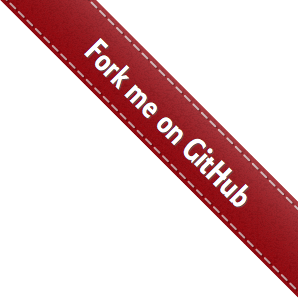Layouts
In our application, we use the template Twig.
All of our templates are here app/Views.
Assigning templates:
- View of user data when accessing the controller action
app/Views/Controller/ - Appearance form
app/Views/Form/ - Insert a single piece of data in the layout
app/Views/Include/ - Layouts to display the site's content
app/Views/Layout/
Twig is a modern template engine for PHP
- Fast: Twig compiles templates down to plain optimized PHP code. The overhead compared to regular PHP code was reduced to the very minimum.
- Secure: Twig has a sandbox mode to evaluate untrusted template code. This allows Twig to be used as a template language for applications where users may modify the template design.
- Flexible: Twig is powered by a flexible lexer and parser. This allows the developer to define its own custom tags and filters, and create its own DSL.
Why yet another template engine?
When it comes to template engines in PHP, many people will tell you that PHP itself is a template engine. But even if PHP started its life as a template language, it did not evolve like one in the recent years. As a matter of fact, it doesn't support many features modern template engines should have nowadays:
- Concise: The PHP language is verbose and becomes ridiculously verbose when it comes to output escaping:
<?php echo $var ?>
<?php echo htmlspecialchars($var, ENT_QUOTES, 'UTF-8') ?>
In comparison, Twig has a very concise syntax, which make templates more readable:
{ { var } }
{ { var|escape } }
{ { var|e } } { # shortcut to escape a variable # }
- Template oriented syntax: Twig has shortcuts for common patterns, like having a default text displayed when you iterate over an empty array:
{ % for user in users % }
* { { user.name } }
{ % else %}
No users have been found.
{ % endfor % }
- Full Featured: Twig supports everything you need to build powerful templates with ease: multiple inheritance, blocks, automatic output-escaping, and much more:
{ % extends "layout.html" % }
{ % block content % }
Content of the page...
{ % endblock % }
Easy to learn: The syntax is easy to learn and has been optimized to allow web designers to get their job done fast without getting in their way.
Extensibility: Twig is flexible enough for all your needs, even the most complex ones. Thanks to an open architecture, you can implement your own language constructs (tags, filters, functions, and even operators) to create your very own DSL.
Unit tested: Twig is fully unit-tested. The library is stable and ready to be used in large projects.
Documented: Twig is fully documented, with a dedicated online book, and of course a full API documentation.
Secure: When it comes to security, Twig has some unique features:
- Automatic output escaping: To be on the safe side, you can enable automatic output escaping globally or for a block of code:
{ % autoescape true % } { { var } } { { var|raw } } { # var won't be escaped # } { { var|escape } } { # var won't be doubled-escaped # } { % endautoescape % }- Sandboxing: Twig can evaluate any template in a sandbox environment where the user has access to a limited set of tags, filters, and object methods defined by the developer. Sandboxing can be enabled globally or locally for just some templates:
{ { include('page.html', sandboxed = true) } }Clean Error Messages: Whenever you have a syntax problem within a template, Twig outputs a helpful message with the filename and the line number where the problem occurred. It eases the debugging a lot.
Fast: One of the goals of Twig is to be as fast as possible. To achieve the best speed possible, Twig compiles templates down to plain optimized PHP code. The overhead compared to regular PHP code was reduced to the very minimum.
